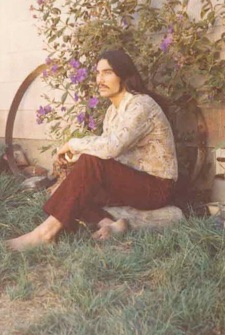The Identification

Giving James Back His Dignity & His Name

With a DNA profile now on file the next step was to search the U.S. Department of Justice’s National Missing and Unidentified Persons System (NamUs), an online database used by law enforcement, medical examiners and the public to solve cases involving missing persons and unidentified deceased. The job of searching for a match fell to FDLE Special Agent Mike Kennedy who was using NamUs for the first time. From the forensic analysis done when the skeleton was discovered in 1976, Agent Kennedy knew he was looking for a muscular, caucasian male in his mid-twenties who stood at least 5’10” and had received good dental care. He also knew that the young man was murdered sometime in 1974 in the woods alongside US 19 in Dixie County, Florida near the Taylor County line.
Agent Kennedy logged into NamUs, entered the case information, and began his search from among the list of possible matches the system returned. Within 15 minutes he zeroed in on the case information that I had entered in NamUs soon after it went online in January of 2009. I imagine Kennedy was surprised to discover that there was a DNA reference sample on file with the California Department of Justice, considering that my brother went missing in 1974. Kennedy looked over the case information for James Berkeley Norris and the more he studied it, the more convinced he became that he was on the right track. Doing further research, he found several other sites that I had utilized to publicize my brother’s case, including Doe Network, FindAGrave, and an old MySpace page.
Next, Agent Kennedy arranged to have the reference sample from CA DOJ sent to UNT for comparison. The results came back a match; the Dixie County John Doe finally had a name, James. It was the end of 2010.
Meanwhile 2,600 miles away in Northern California I was sitting across my kitchen table from Tony DeTomasi, a detective from the City of Fairfield (California) Police Department. The first thing he said to me was, “I guess you’re wondering why I asked to come by your house instead of speaking to you on the phone.” I shrugged and looked at him blankly. What he said next remains something of a blur - “murder victim,” “skeletal remains discovered in 1976,” “69 billion to 1 DNA match,” “no doubt about it.” As hard as it is for me to remember in detail what DeTomasi said to me, I recall my reaction with complete clarity: I didn’t believe a word of it. I asked some questions and he gave me more details, then slowly I started to allow it to sink in. The search was over. I went from disbelief to shock to grief to anger to relief to panic, all in a matter of minutes. When the tears came they were not only for Jimmy but for my mother and father who both died without knowing what happened to their beloved son.


